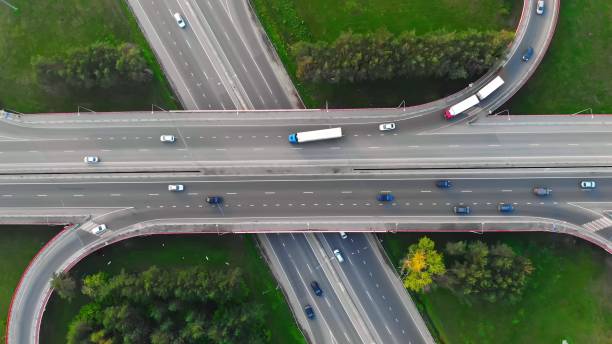Contact Us
RoadVision AI
Private Limited
Office No. 308 & 310, B Block
Ansal Chamber - 1, Bhikaji Cama Place,
Near Engineers India Limited (EIL) Bhawan, New Delhi - 110066
© 2024 | RoadVision AI | All rights reserved
The Indian Roads Congress (IRC) Standard IRC 003-1983 provides guidelines for determining the dimensions and weights of road design vehicles. These parameters are fundamental to designing various road components, including traffic lanes, shoulders, underbridges, electrical service lines, and other overhead structures. The width, height, length, and axle load of vehicles influence the geometric and structural design of highways and play a crucial role in ensuring safety and efficiency in road usage.

The original IRC Standard on Dimensions and Weights of Road Design Vehicles was published in January 1954. With advancements in motor vehicle design and highway systems, as well as the need for metricization, a complete revision of the Standard became essential. The updated version, prepared by L.R. Kadiyali and modified by the Ministry of Shipping and Transport (Roads Wing), reflects contemporary practices and international trends.
The Specifications and Standards Committee approved the revised draft in 1983, and it was subsequently endorsed by the Executive Committee and the Council for publication as the official standard.
The Standard applies to all road elements except culverts and bridges, which are governed by separate IRC Bridge Codes. It categorizes vehicles into three types for road design purposes:
The choice of vehicle type for road design depends on terrain, economic considerations, and road importance. For instance, roads in steep or mountainous terrain may only need to accommodate single-unit vehicles or semi-trailers.
Road components must be designed to handle the dimensions and weights of vehicles conforming to this Standard. This ensures they are initially sufficient or can be upgraded later to meet evolving traffic demands.
IRC 003-1983 establishes comprehensive guidelines to accommodate the growing demands of modern road infrastructure. By defining the dimensions and weights of design vehicles, this Standard ensures safe and efficient roadways capable of meeting present and future transportation needs. For engineers, policymakers, and other stakeholders, adhering to this Standard is essential to building resilient and well-structured road systems.
RoadVision AI is revolutionizing the way we build and maintain infrastructure by leveraging the power of AI in roads to enhance road safety and optimize road management. By utilizing cutting-edge roads AI technology, the platform enables the early detection of potholes, cracks, and other road surface issues, ensuring timely maintenance and improved road conditions. With a mission to create smarter, safer, and more sustainable roads, RoadVision AI ensures full compliance with IRC Codes, empowering engineers and stakeholders to make data-driven decisions that reduce costs, minimize risks, and improve the overall transportation experience.